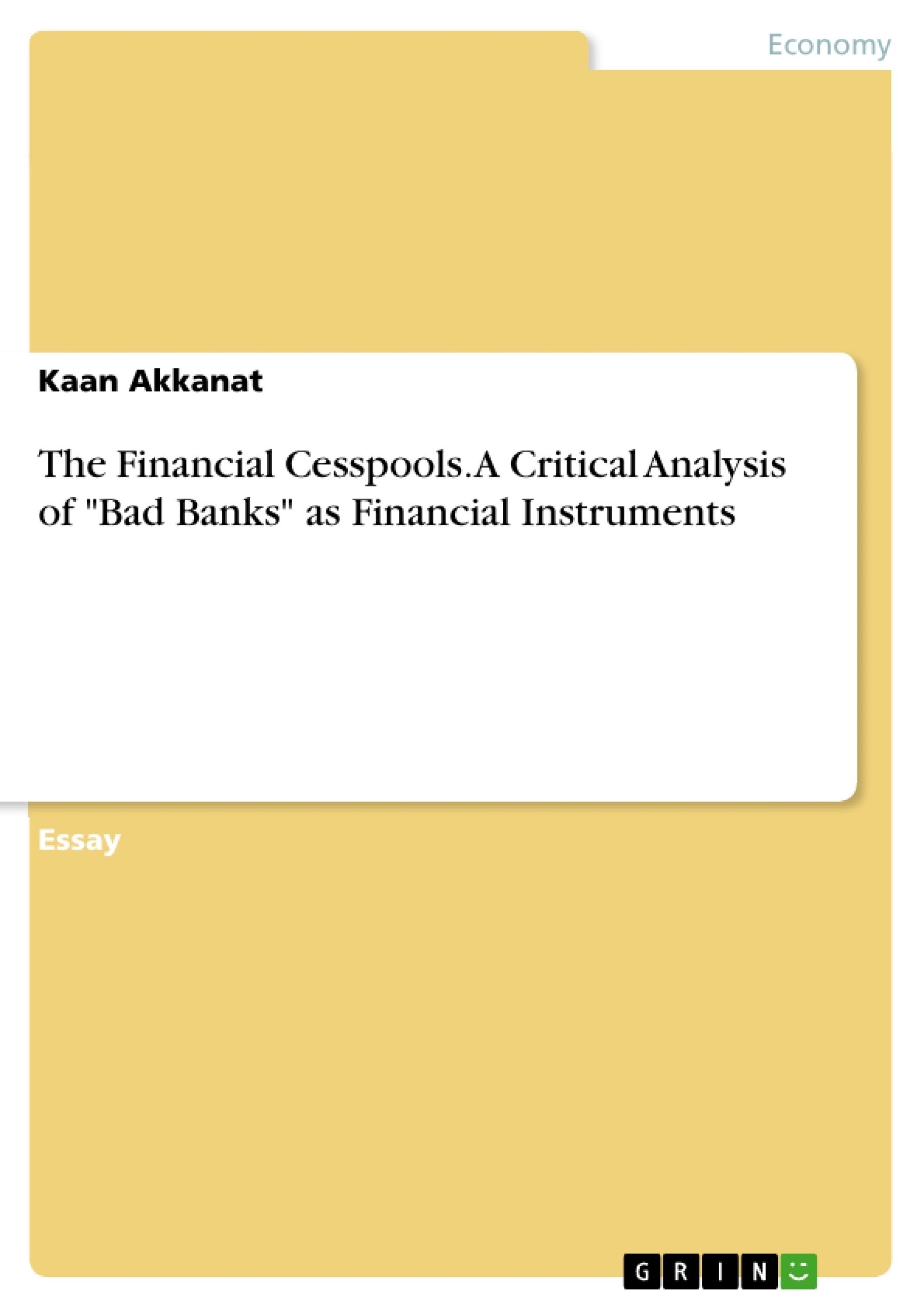"The cardinal maxim is that any aid to a present bad bank is the surest mode of preventing the establishment of a future good bank" wrote the British economic journalist Walter Bagehot in 1873. In his evaluative analysis, Bagehot stretched the potential problems that may arise as a result of government's interventions. Although there has been more than a century since his comments on the pre-mature idea of a bad bank and interventions, the discussions on the utility of bad banks persists in today's financial spectrums. In economic terminology, bad banks are used to take risky assets from otherwise good banks. This essay will first address the idea of so-called bad banks as a new financial instrument and then will focus on the analysis of their impacts on crises development.
Inhaltsverzeichnis (Table of Contents)
- Introduction:
- Bad Banks as Financial Instruments:
- Bad Banks' Impact on the Development of Financial Crises:
- Conclusion:
Zielsetzung und Themenschwerpunkte (Objectives and Key Themes)
This essay explores the concept of "bad banks" as a financial instrument, examining their role in mitigating financial crises and the potential negative consequences of their implementation. The main objective is to provide a comprehensive analysis of bad banks, encompassing their operational mechanisms, economic impact, and potential pitfalls.- The concept of bad banks as a financial instrument
- The trade-offs involved in establishing and operating bad banks
- The potential impact of bad banks on the development of financial crises
- The moral hazard problem associated with bad banks
- The potential for bad banks to contribute to corporate bankruptcy
Zusammenfassung der Kapitel (Chapter Summaries)
Introduction:
This introductory section sets the context for the analysis of bad banks. It begins with a quote from Walter Bagehot highlighting the potential risks associated with government interventions in the banking sector. The essay then introduces the concept of bad banks as a financial instrument, specifically designed to absorb toxic assets from troubled banks.Bad Banks as Financial Instruments:
This section provides a detailed explanation of the operational mechanisms of bad banks. It describes how they function to acquire non-performing assets from state-guaranteed banks, thereby clearing the balance sheets of healthy banks. The essay then discusses the trade-off involved in determining the price paid by bad banks for these assets, highlighting the potential for moral hazard. It also emphasizes the importance of effective monitoring and a limited lifespan for bad banks to ensure their effectiveness.Bad Banks' Impact on the Development of Financial Crises:
This section explores the potential negative consequences of bad banks, focusing on their impact on the development of financial crises. The essay presents three main arguments: the moral hazard problem, the potential subsidy on corporate bankruptcy, and the loss of confidence. It argues that bad banks can encourage risk-taking by banks, contribute to the failure of companies by facilitating quick bankruptcy proceedings, and undermine trust in the banking system.Schlüsselwörter (Keywords)
This essay examines the concept of "bad banks" as a financial instrument, analyzing their role in mitigating financial crises and their potential contribution to crisis development. Key themes include the trade-offs involved in establishing and operating bad banks, the potential for moral hazard, the impact on corporate bankruptcy, and the loss of confidence in the financial system.- Quote paper
- Kaan Akkanat (Author), 2012, The Financial Cesspools. A Critical Analysis of "Bad Banks" as Financial Instruments, Munich, GRIN Verlag, https://www.grin.com/document/293832



